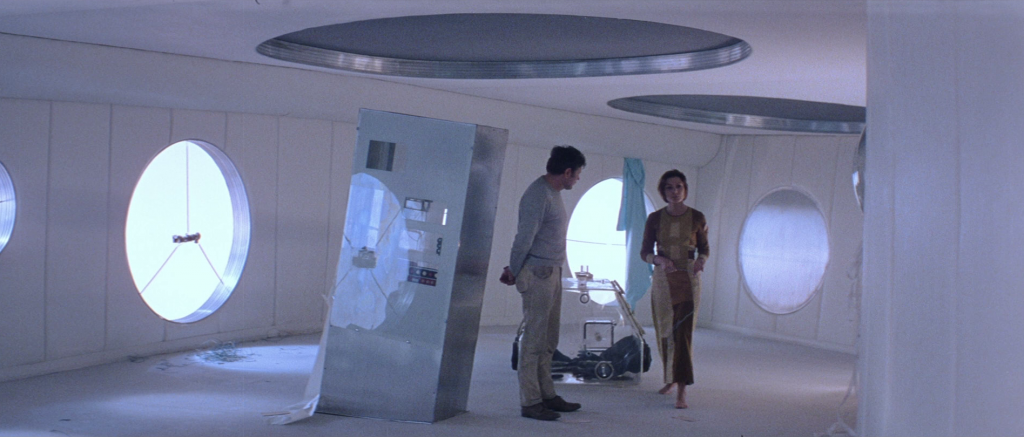Solaris

Andrei Tarkovsky
Russia – 1972

Screenplay: Fridrikh Gorenshteyn, Andrei Tarkovsky
Cinematography: Vadim Yusov
Production: Creative Unit of Writers & Cinema Workers Kinostudiya “Mosfilm” Unit Four
Language: Russian, German
Duration: 167 min
Color: Black and White and Color
Synopsis: Psychologist Kris Kelvin is sent to a space station hovering over the Solaris Ocean, orbiting the moon of a distant planet. Once built to accommodate a crew of over 80 people, the research facility now has only a handful of occupants who suffer from unexplained solid hallucinations. Kris arrives to find the station in various states of abandon and disrepair and the remaining two scientists are withdrawn and secretive. When he himself starts seeing impossible things, he begins to appreciate the baffling nature of the defensive mechanism of alien intelligence emanating from the planet below.
Notes:
In Tarkovsky’s Solaris, the dialogue between humankind and the planet transpires exclusively through images, and so does that between the director and his public, along with the process whereby Harey—an adult alien devoid of consciousness at first—becomes humanized. The Soviet director’s first film thus exemplifies, in an original and complex way, the manner in which the image communicates and contributes to the development of cognition.
The dialogue between world and anti-world undergoes a concrete materialization inasmuch as one of the direct, first person interlocutors, thanks to its peculiarities, is the planet itself. It is here that the originality of Tarkovsky’s spatial treatment of Stanislaw Lem’s novel manifests itself: in the director’s metamorphosing of an animate space – or rather, the living planet inhabiting it – as one of the protagonists of the cinematic text. The other partner to the dialogue is, of course, Kris Kelvin, who has been given the assignment of investigating certain strange happenings at the Solaris space station and of deciding on the basis of his findings whether to destroy the alien entity or try to establish contact with it. The film centers upon a problematic communicative relationship – one which, in its context, is perilously beyond normal bounds. The terrestrial society of the future as Tarkovsky envisions it – which has similarities to what was actually his own – is characterized by its rigid organization. Founded on the premise that truth is univocal, this social order refuses to accept diversity, which it proceeds to destroy whenever it becomes too prominent to be ignored. This is exactly the parabolic meaning connected with the Earth in its relations with Solaris – an import first instanced in the dogmatic refusal of scientists to verify the testimony of one of the first witnesses of the alien-induced hallucinations, the astronaut Berton, and then in the request to bombard the planet once the goings on at the space station prove to be too disquieting.
The anti-world of Solaris is disturbing to terrestrial minds because as a living entity, it invalidates the fixed laws and rules to which they are mechanically accustomed, standing at once outside and within the purview of such. This double valence, which scientists find logically unacceptable, has its correlative in their confrontations with the planet, in regard to which they are both hosts and guests. Their space station orbits above the waters of Solaris, but that thinking magmatic mass at the same time enters into them, insinuating itself into their minds as they sleep. From this position, the planet conducts its attempts to communicate with them, taking on a role analogous to, but more powerful than, that of the Unconscious. It does not limit itself to transmitting mental messages; it also succeeds in materializing them.
Excerpt from Salvestroni, Simonetta. “The Science-Fiction Films of Andrei Tarkovsky.” Science Fiction Studies 14, no. 3 (November 1987): 294-306.


